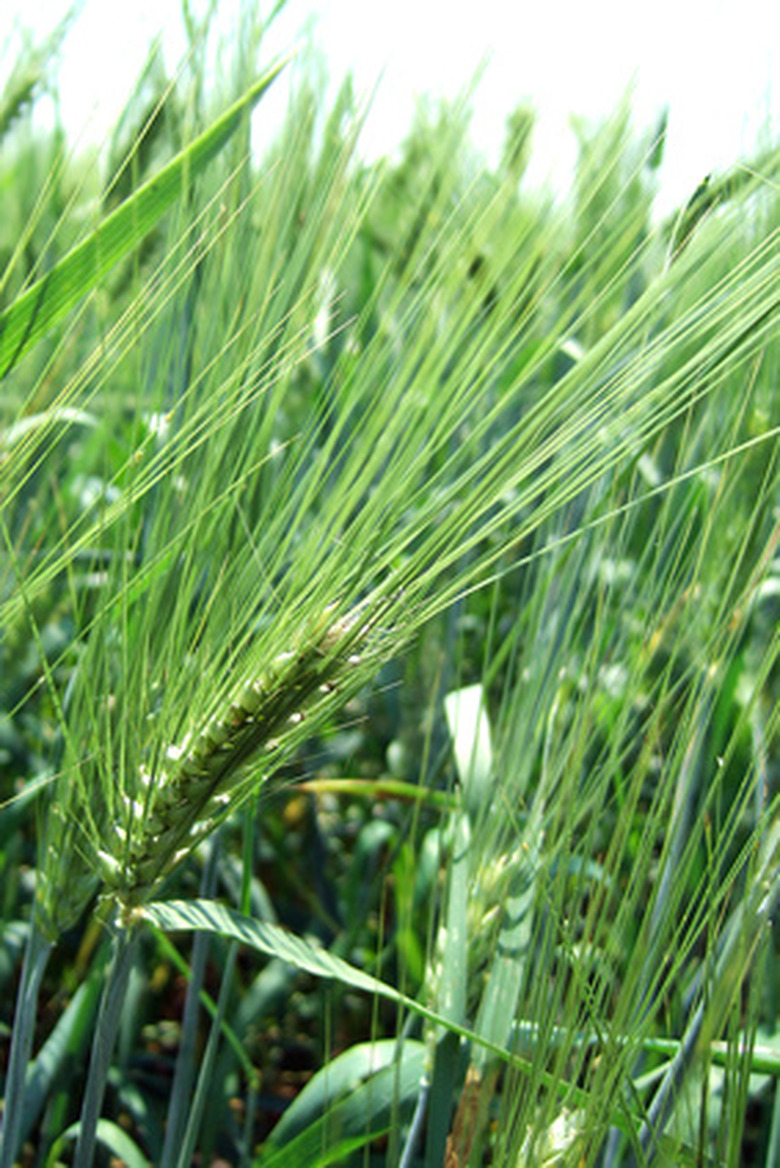List Of Yellow Herbicides
"Yellow" herbicides inhabit the lateral root development of plants. Their main ingredients interfere with the process of cell division, according to the University of Tennessee Weed Science Department. These popular herbicides are used to kill annual grass and small-seeded broadleaf weeds. All of these herbicides have the potential to harm humans, animals and other plants if not used correctly. It is vital to read the labels carefully.
Prowl
Prowl is an herbicide that contains pendimethalin. According to Grower Central, it is used to control specific annual grass and broadleaf weeds in direct-seeded dry bulb onions and field corn. It is also used to control weeds in fruit trees in British Columbia only. It cannot be used in prairie provinces, except for dry bulb onions planted in mineral soils. Because Prowl contains a petroleum distillate that is toxic to aquatic organisms, it should not be used in or near any form of water or allowed to contaminate water through waste disposal or equipment cleaning.
- "Yellow" herbicides inhabit the lateral root development of plants.
- According to Grower Central, it is used to control specific annual grass and broadleaf weeds in direct-seeded dry bulb onions and field corn.
Treflan
Treflan is a pre-emergent herbicide that contains trifluralin. According to Dow AgroSciences, it is used to control grasses and some broadleaf weeds, such as redroot pigweed and foxtails, in field crops, vegetables and ornamentals. Treflan's main ingredient, trifluralin, is extremely resistant to leaching. There are rotation crop restrictions on the label, including not planting beets or spinach for at least 12 months after application in some states. It is imperative to read the label for other planting restrictions. Treflan is non-toxic to bees, but highly toxic to aquatic organisms, including shrimp and oysters. It should never be applied directly to water or near aquatic areas or marshes.
- Treflan is a pre-emergent herbicide that contains trifluralin.
- Treflan is non-toxic to bees, but highly toxic to aquatic organisms, including shrimp and oysters.
Sonalan
Sonalan is a broad-spectrum foundation herbicide that has ethalfluralin as its main ingredient. It controls annual grasses and broadleaf weeds, such as witchgrass and chickweed, in many crops, including canola, peanuts, safflower and soybeans. According to Dow AgroSciences, animals should not be allowed to graze or forage on crops grown in treated soil or cut for silage or hay. There are rotation crop restrictions on the label, including not planting beets, spinach or oats for several months after application in some states.
